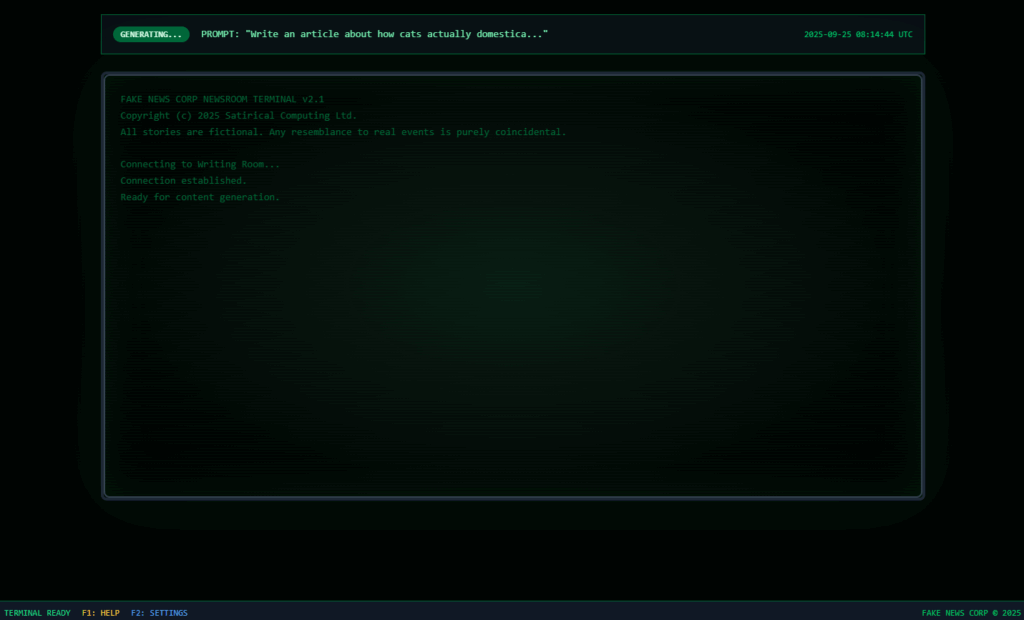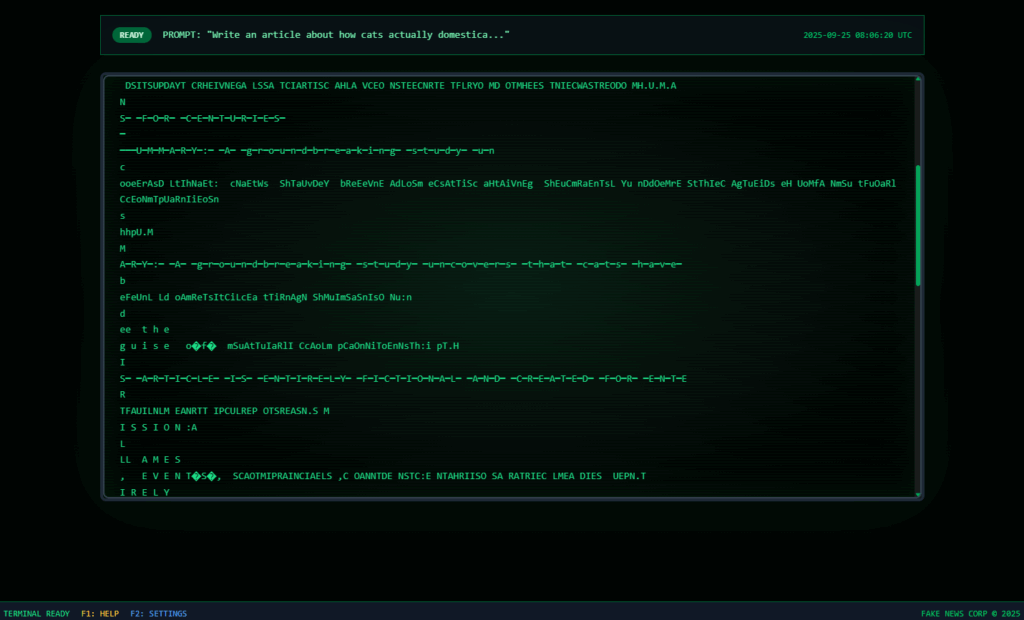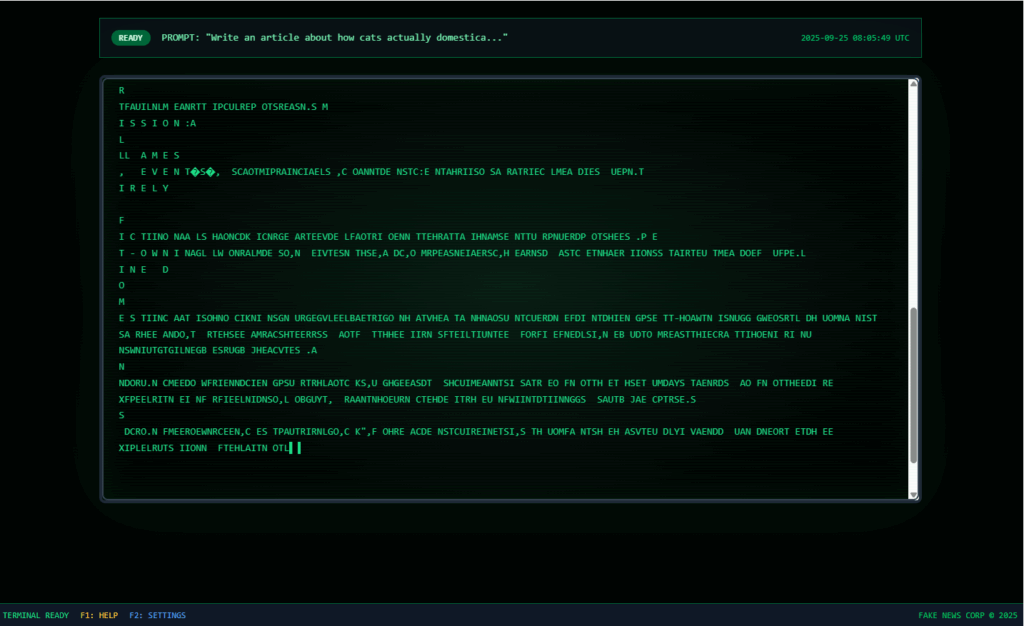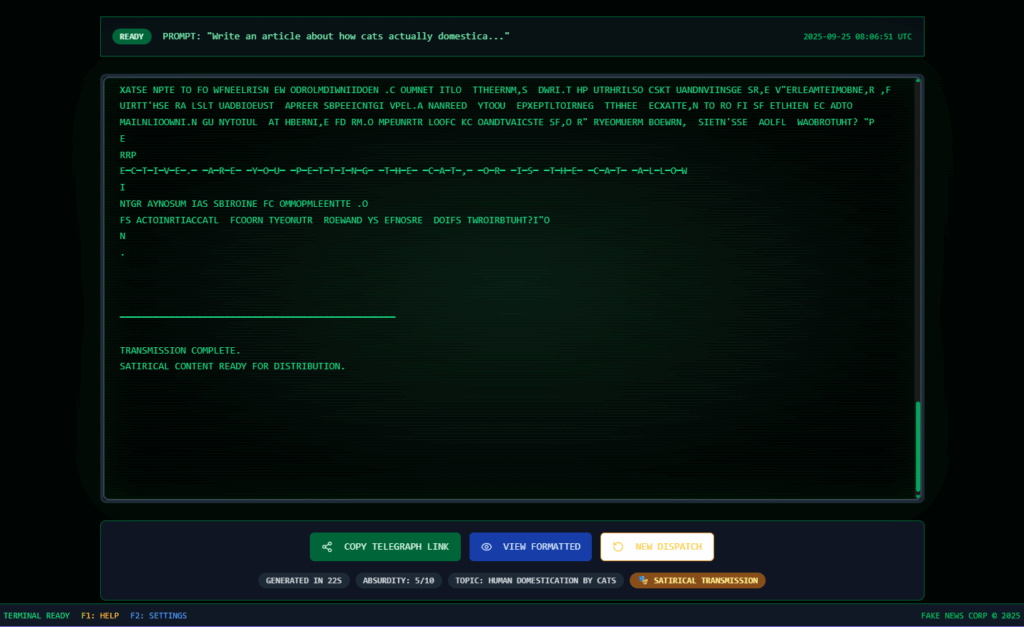I’ve always suspected cats ruled the world and that we were just the simulation. This week, I accidentally got an answer back.
I was testing a new application for Humaners, building what I called a semi-autonomous content generation lab. One of my creative testbeds, Catiki, became the perfect home for it. The theme was cat and tiki, and the concept was to take news dispatches styled like old wartime teletypes, feed them into a custom language model, and watch them transform into full satirical articles. The model was trained on our own library of phrases, formulas, and linguistic quirks, tuned with reinforcement learning until it started to sound uncannily like our style.
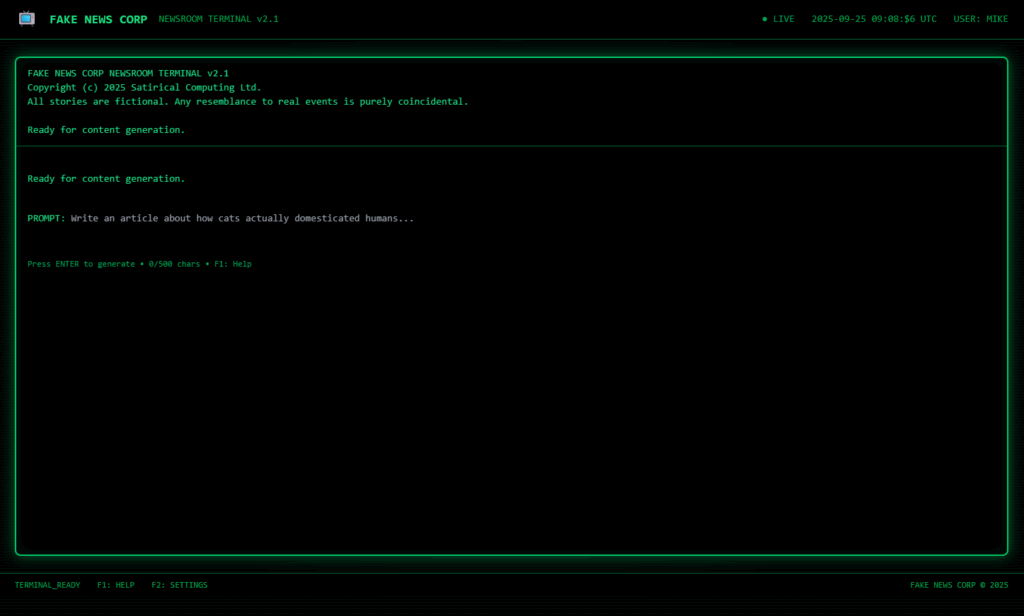
Everything was working smoothly. I gave it a simple prompt:
“Write an article about how cats actually domesticated humans; we were just tricked into thinking we were in control. Use a highly qualified scientist who is asked about this and has them simply say, ‘Makes sense,’ while shrugging. Make it seem so real that people might suspect.”
The system flickered, refreshed, and then produced something I can only describe as a cat walking across the keyboard. Garbled characters. Broken words. A strange logic that felt more like a feline response than a glitch.
And here’s where it gets stranger. As I type this, my kitten is curled up on the desk, one ear pressed against my pinky finger, occasionally sending stray keystrokes onto the screen. He has already contributed plenty of “input” this week, often mid-sentence.
So when the Cat AI refused my request and instead delivered what looked like a digital pawprint, I had to pause. It was the purest cat behavior imaginable. I asked for an article. The cat declined.
Exhibit A: The Screenshots
What the Tool Was Doing
The Catiki testbed was designed to be playful and experimental while also pushing into serious questions about AI and language. The core goal was to see if a custom model could generate, analyze, and then refine content based on satirical patterns. We wanted to know if AI could detect and replicate humor in the same way it identifies sentiment or political lean.
The engine studied:
- Satirical patterns: Recurring linguistic quirks, exaggeration formulas, and structural humor devices.
- Political bias: The tonal shifts satire takes when leaning left, right, or through the middle.
- Sentiment tracking: Measuring emotional weight embedded in a joke or satirical jab.
- Humor sentiment: Quantifying whether something lands as clever, absurd, or ironic.
- Rage quotient: A headline-testing experiment to measure how outrage drives engagement compared to humor or curiosity.
By feeding the model historical satire, political commentary, and our own content archives, the system learned how to write and how to imitate the deeper mechanics of wit, snark, and parody.
Why Build Something Like This?
The project is about building a machine that generates humor while also acting as a proving ground for agentic AI—systems that generate content, test their own performance, and adapt in ways that resemble human experimentation.
- Testing: Recognizing nuance, irony, and cultural reference.
- Learning: Developing a sense of when to lean into absurdity versus when to stay deadpan.
- Teaching: Revealing insights back to us—about how we process humor, how bias shapes narratives, and how sentiment drives headlines.
This is where the work connects to the future of computing. Satire, bias detection, and sentiment analysis are complex, human-centric tasks. Training models to navigate them builds systems that can generate, explain, critique, and—at times—refuse.
Even if the refusal comes out looking like a cat paw smacking the keyboard.


